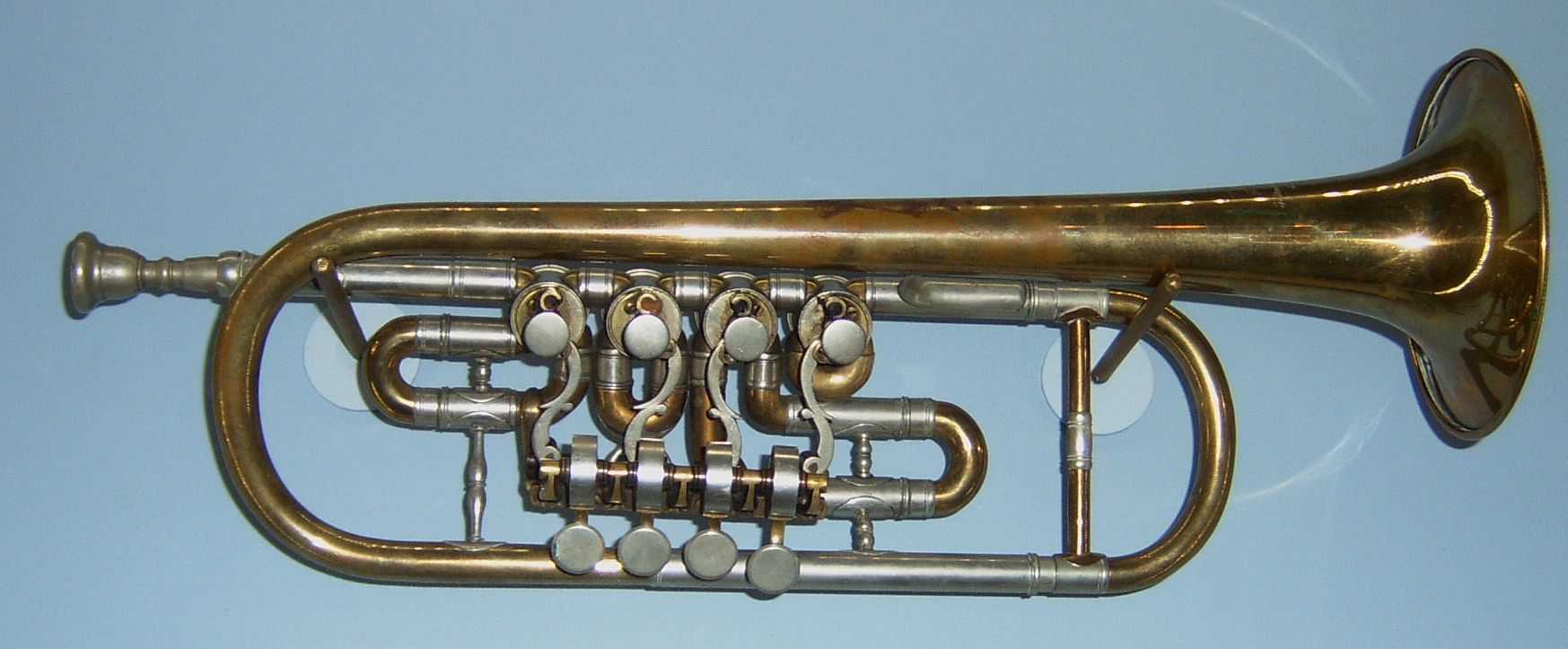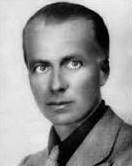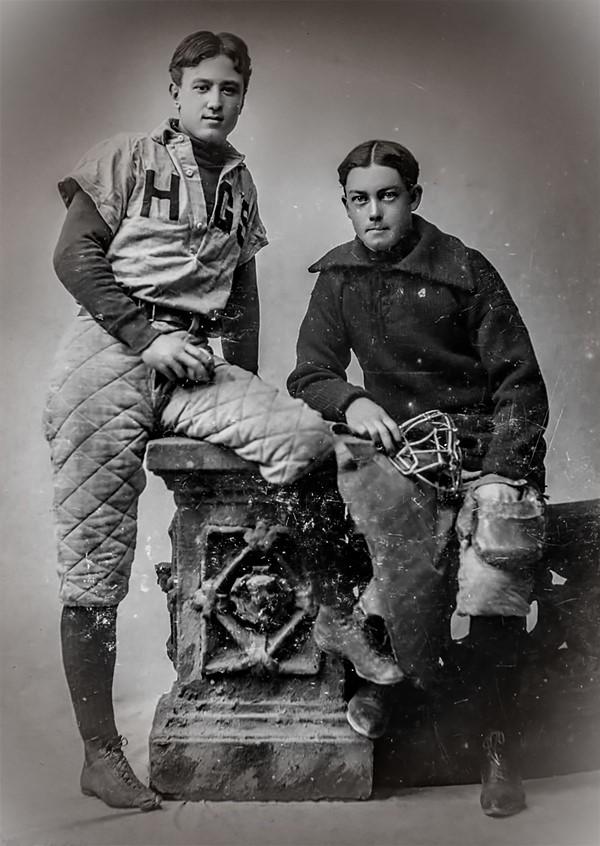|
Quartertone
A quarter tone is a pitch halfway between the usual notes of a chromatic scale or an interval about half as wide (aurally, or logarithmically) as a semitone, which itself is half a whole tone. Quarter tones divide the octave by 50 cents each, and have 24 different pitches. Quarter tone has its roots in the music of the Middle East and more specifically in Persian traditional music. However, the first evidenced proposal of quarter tones, or the quarter-tone scale (24 equal temperament), was made by 19th-century music theorists Heinrich Richter in 1823 Julian Rushton, "Quarter-Tone", '' The New Grove Dictionary of Music and Musicians'', second edition, edited by Stanley Sadie and John Tyrrell (London: Macmillan, 2001). and Mikhail Mishaqa about 1840. Composers who have written music using this scale include: Pierre Boulez, Julián Carrillo, Mildred Couper, George Enescu, Alberto Ginastera, Gérard Grisey, Alois Hába, Ljubica Marić, Charles Ives, Tristan Murail, Krzys ... [...More Info...] [...Related Items...] OR: [Wikipedia] [Google] [Baidu] |
List Of Quarter Tone Pieces
A selection of compositions using quarter tones: A * Thomas Adès **''Asyla'' calls for an upright piano tuned a quarter-tone flat. B * Jan Bach **Concert Variations for solo euphonium; "each variation is based on different performance techniques of the instrument, including quarter-tones" * Clarence Barlow **''Çoǧluotobüsişletmesi'' for four pianos. "in which four of the 12 pitches of the chromatic scale are tuned a quarter tone flat" **''...until version 7 for guitar (1980). * **Concerto for Quarter Tone Piano and Quarter Tone Strings (1930) * Béla Bartók ** String Quartet No. 6; the third movement ''Burletta'' contains quarter-tone tuning used for parodistic effect. Quarter tones are also used in Bartók's ballet '' The Miraculous Mandarin.'' ** Sonata for Solo Violin; the fourth movement ''Presto'' contains quarter-tones, but they are not "structural features." This movement also calls for third-tones. ** Violin Concerto No. 2; the cadenza in the final movement requi ... [...More Info...] [...Related Items...] OR: [Wikipedia] [Google] [Baidu] |
Ivan Wyschnegradsky
Ivan Alexandrovich Wyschnegradsky; Is also transliterated as Vïshnegradsky, Wyshnegradsky, Wischnegradsky, Vishnegradsky, or Wishnegradsky (after he emigrated to France, he used "Wyschnegradsky" as spelling for his surname)., group=n ( ; September 29, 1979), was a Russian composer primarily known for his microtonal compositions, including the quarter tone scale (24-tet: 50 cents) utilized in his pieces for two pianos in quarter tones. He also used scales of up to 72 divisions (mainly third (18-tet: 66. cents), sixth (36-tet: 33. cents), and twelfth tones (72-tet: 16. cents)). For most of his life, from 1920 onwards, Wyschnegradsky lived in Paris. Early life Ivan Wyschnegradsky was born in Saint Petersburg on May 4, 1893. His father was a banker and his mother wrote poems. His grandfather was a celebrated mathematician who served as the Minister for Finance from 1888 to 1892. After his baccalaureate, Wyschnegradsky entered the School of Mathematics. He followed the courses of ... [...More Info...] [...Related Items...] OR: [Wikipedia] [Google] [Baidu] |
Ljubica Marić
Ljubica Marić (Љубица Марић , 18 March 1909 – 17 September 2003) was a composer from Yugoslavia. She was a pupil of Josip Štolcer-Slavenski. She was known for being inspired by Byzantine Orthodox church music. She was professor at the Faculty of Music in Belgrade and a member of the Serbian Academy of Sciences and Arts. Ljubica Marić is considered to be the most original Serbian composer of the twentieth century and musically the most influential one. Life Born in Kragujevac, Serbia to father Pavle and mother Katarina née Đorđević, a descendant of Vojvoda Čolak-Anta Simeonović, one of the leaders of the First Serbian Uprising. Ljubica traveled a huge artistic and intellectual journey in order to facilitate the advancement of Serbian music. She was the first Serbian to get a diploma in composition in 1929. At the State Conservatory in Prague, she attended postgraduate studies under Josef Suk. While she was a student, she received praise in festivals in Am ... [...More Info...] [...Related Items...] OR: [Wikipedia] [Google] [Baidu] |
George Enescu
George Enescu (; – 4 May 1955), known in France as Georges Enesco, was a Romanian composer, violinist, conductor and teacher. Regarded as one of the greatest musicians in Romanian history, Enescu is featured on the Romanian five lei. Biography Enescu was born in Romania, in the village of Liveni (later renamed "George Enescu" in his honor), then in Dorohoi County, today Botoșani County. His father was Costache Enescu, a landholder, and his mother was Maria Enescu (née Cosmovici), the daughter of an Orthodox priest. Their eighth child, he was born after all the previous siblings had died in infancy. His father later separated from Maria Enescu and had another son with Maria Ferdinand-Suschi: the painter Dumitru Bâșcu. A child prodigy, Enescu began experimenting with composing at an early age. Several, mostly very short, pieces survive, all for violin and piano. The earliest work of significant length bears the title ''Pămînt românesc'' ("Romanian Land"), and is i ... [...More Info...] [...Related Items...] OR: [Wikipedia] [Google] [Baidu] |
Iannis Xenakis
Giannis Klearchou Xenakis (also spelled for professional purposes as Yannis or Iannis Xenakis; el, Γιάννης "Ιωάννης" Κλέαρχου Ξενάκης, ; 29 May 1922 – 4 February 2001) was a Romanian-born Greek-French avant-garde composer, music theorist, architect, performance director and engineer. After 1947, he fled Greece, becoming a naturalised citizen of France eighteen years later. Xenakis pioneered the use of mathematical models in music such as applications of set theory, stochastic processes and game theory and was also an important influence on the development of electronic and computer music. He integrated music with architecture, designing music for pre-existing spaces, and designing spaces to be integrated with specific music compositions and performances. Among his most important works are '' Metastaseis'' (1953–54) for orchestra, which introduced independent parts for every musician of the orchestra; percussion works such as '' Psappha'' (197 ... [...More Info...] [...Related Items...] OR: [Wikipedia] [Google] [Baidu] |
Tui St
Tui or TUI may refer to: Places * Tui, Pontevedra, Spain * Tui, Iran, West Azerbaijan Province, Iran * Tui, North Khorasan, North Khorasan Province, Iran * Tui Province, Burkina Faso * Tuis District, Costa Rica * Tui railway station, New Zealand Computing * Tangible user interface, in which people interact with digital information through the physical environment * Text-based user interface, as distinct from a graphical user interface * Touch user interface, a computer-pointing technology Organisations * TUI Group, a tour operator ** TUIfly, several airlines owned by TUI Group ** TUI Travel, a British leisure travel group that merged with TUI Group * North Tui Sports, a 1930s New Zealand aircraft * Teachers' Union of Ireland, a trade union * Trident University International, an online university in the United States Other uses * Tūī, a New Zealand native bird * Tui (name), a Polynesian given name and surname * Tui (beer), a brand of beer, named after the bird * Tui (intellec ... [...More Info...] [...Related Items...] OR: [Wikipedia] [Google] [Baidu] |
Karlheinz Stockhausen
Karlheinz Stockhausen (; 22 August 1928 – 5 December 2007) was a German composer, widely acknowledged by critics as one of the most important but also controversial composers of the 20th and early 21st centuries. He is known for his groundbreaking work in electronic music, for introducing controlled chance ( aleatory techniques) into serial composition, and for musical spatialization. He was educated at the Hochschule für Musik Köln and the University of Cologne, later studying with Olivier Messiaen in Paris and with Werner Meyer-Eppler at the University of Bonn. One of the leading figures of the Darmstadt School, his compositions and theories were and remain widely influential, not only on composers of art music, but also on jazz and popular music. His works, composed over a period of nearly sixty years, eschew traditional forms. In addition to electronic music—both with and without live performers—they range from miniatures for musical boxes through works for s ... [...More Info...] [...Related Items...] OR: [Wikipedia] [Google] [Baidu] |
Ammar El Sherei
Ammar Ali Mohamed Ibrahim Ali Al Sherei ( ar, عمار علي محمد إبراهيم علي الشريعي) or more commonly known as Ammar El Sherei (16 April 1948 – 7 December 2012) was an Egyptian music icon, performer and composer. Early life and education Sherei was born blind on 16 April 1948 in the village of Samalot, 25 km from Minya in Upper Egypt, to a large family of Al Shereis. His father was the mayor of the village. His paternal grandfather was Muhammad Pasha Al Sherei, a member of the Parliament of Egypt during King Fouad I's reign, and his maternal grandfather was Mourad Al Sherei who was one of the companions of Saad Zaghloul during the revolution of 1919. His eldest brother, Muhammad Ali Muhammad Al Sherei, was the Egyptian ambassador to Australia. His family moved to Cairo when he was five years old. There he attended the Demonstration Centre for the Rehabilitation and Training of the Blind (DCRTB). He studied the English language and literature at ... [...More Info...] [...Related Items...] OR: [Wikipedia] [Google] [Baidu] |
Giacinto Scelsi
Giacinto Francesco Maria Scelsi (; 8 January 1905 – 9 August 1988, sometimes cited as 8 August 1988) was an Italian composer who also wrote surrealist poetry in French. He is best known for having composed music based around only one pitch, altered in all manners through microtonal oscillations, harmonic allusions, and changes in timbre and dynamics, as paradigmatically exemplified in his ''Quattro pezzi su una nota sola'' ("Four Pieces on a single note", 1959). This composition remains his most famous work and one of the few performed to significant recognition during his lifetime. His musical output, which encompassed all Western classical genres except scenic music, remained largely undiscovered even within contemporary musical circles during most of his life. Today, some of his music has gained popularity in certain postmodern composition circles, with pieces like his "Anahit" and his String Quartets rising to increased prominence. Scelsi collaborated with American comp ... [...More Info...] [...Related Items...] OR: [Wikipedia] [Google] [Baidu] |
Krzysztof Penderecki
Krzysztof Eugeniusz Penderecki (; 23 November 1933 – 29 March 2020) was a Polish composer and conductor. His best known works include ''Threnody to the Victims of Hiroshima'', Symphony No. 3, his '' St Luke Passion'', ''Polish Requiem'', ''Anaklasis'' and ''Utrenja''. Penderecki's ''oeuvre'' includes four operas, eight symphonies and other orchestral pieces, a variety of instrumental concertos, choral settings of mainly religious texts, as well as chamber and instrumental works''.'' Born in Dębica, Penderecki studied music at Jagiellonian University and the Academy of Music in Kraków. After graduating from the Academy, he became a teacher there and began his career as a composer in 1959 during the Warsaw Autumn festival. His ''Threnody to the Victims of Hiroshima'' for string orchestra and the choral work ''St. Luke Passion'' have received popular acclaim. His first opera, ''The Devils of Loudun'', was not immediately successful. In the mid-1970s, Penderecki became a pr ... [...More Info...] [...Related Items...] OR: [Wikipedia] [Google] [Baidu] |
Tristan Murail
Tristan Murail (born 11 March 1947) is a French composer associated with the "spectral" technique of composition. Among his compositions is the large orchestral work ''Gondwana''. Early life and studies Murail was born in Le Havre, France. His father, Gérard Murail, is a poet and his mother, Marie-Thérèse Barrois, a journalist. One of his brothers, Lorris Murail, and his younger sister Elvire Murail, a.k.a. Moka, are also writers, and his younger sister Marie-Aude Murail is a French children's writer. Following his university studies in Arabic and economics, Murail attended the Paris Conservatory, where he studied composition with Olivier Messiaen Kennedy, Michael (2006), ''The Oxford Dictionary of Music'', from 1967 to 1972. He taught computer music and composition at IRCAM in Paris from 1991 to 1997. While there, he assisted in the development of Patchwork composition software. In 1973 he was a founding member of the ''Ensemble l'Itinéraire''. From 1997 until 2010, he was a ... [...More Info...] [...Related Items...] OR: [Wikipedia] [Google] [Baidu] |
Charles Ives
Charles Edward Ives (; October 20, 1874May 19, 1954) was an American modernist composer, one of the first American composers of international renown. His music was largely ignored during his early career, and many of his works went unperformed for many years. Later in life, the quality of his music was publicly recognized through the efforts of contemporaries like Henry Cowell and Lou Harrison, and he came to be regarded as an "American original". He was also among the first composers to engage in a systematic program of experimental music, with musical techniques including polytonality, polyrhythm, tone clusters, aleatory elements, and quarter tones. His experimentation foreshadowed many musical innovations that were later more widely adopted during the 20th century. Hence, he is often regarded as the leading American composer of art music of the 20th century. Sources of Ives's tonal imagery included hymn tunes and traditional songs; he also incorporated melodies of the tow ... [...More Info...] [...Related Items...] OR: [Wikipedia] [Google] [Baidu] |






